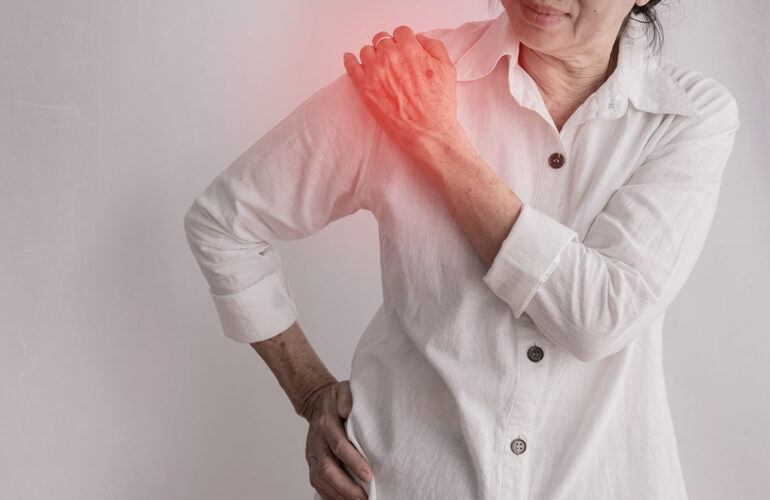Quality of life among many people with Parkinson’s disease may be affected more by non-motor symptoms like pain and depression than motor symptoms commonly associated with the disorder. By far, the most frequent complaint is pain which affects between roughly 70% to 95% of all individuals diagnosed with this neurodegenerative condition. Despite this, non-motor symptoms are frequently underreported and go largely untreated. This brief article examines different types of pain associated with Parkinson’s Disease and a variety of treatment possibilities.
Types of Pain
Addressing the issue of pain and Parkinson’s disease is not an easy task due to its multifactorial nature, etiology and symptom presentation. To make the issue a little clearer, pain can be categorized in two ways: pain related to the actual disease itself and pain completely unrelated to Parkinson’s disease.
Parkinson’s-Related Pain
Pain related to Parkinson’s is caused by a degeneration occurring throughout the nervous system as the disease becomes progressively worse over time. In the brain, the basal ganglia’s ability to moderate pain becomes disrupted by diminishing dopamine levels. Also, the neurodegeneration process creates spinal oversensitivity, discomfort and pain.
Non-Parkinson’s-Related Pain
Non-Parkinson’s pain, or pain secondary to the disease, usually presents as musculoskeletal pain and is many times associated with spine or joint arthritis. This type of pain is usually amplified by akinesia, or loss of voluntary movement, and rigidity that follows. Other symptoms include:
- Muscle tenderness
- Arthritic changes
- Imbalanced gait
- Postural abnormalities
Besides these types of generalized categories of pain that occur with Parkinson’s disease, other types including neuropathic (compression of nerve roots), dystonic (muscular contractions) and central pain (burning, tingling, aching) may also be part of the clinical picture. Some individuals may also experience oral and genital pain as the disease progresses.
Pharmacological Treatments for Pain
As with most conditions, the earlier the diagnosis the quicker the treatment and hopefully, better management of symptoms. Despite pain being a major factor in diminishing quality of life, only 50% of people with Parkinson’s receive some type of pain therapy. Some commonly prescribed pain medications include:
- Safinamide (Xadago)
- Pregabaline (Lyrica)
- Amitriptyline (Elavil)
- Botulinum Toxin (Botox)
- Gabapentin (Neurontin)
- Opioids
- NSAIDS
- Antidepressants
- Anxiolytics
- Anticonvulsants
- Cannabinoids
Non-Pharmacological Approaches to Pain Management
Besides medications, people experiencing pain related or secondary to Parkinson’s disease may find relief by using a combination of multimodal therapies. Acupuncture, yoga, meditation, cranial electrotherapy stimulation (CES), physical therapy and chiropractic medicine may help with various symptoms of pain. More invasive treatments for more severely disabled individuals may involve deep brain stimulation and surgical procedures involving joints and the spine (i.e. image-guided spinal injections).
Special Concerns: Depression and Restless Leg Syndrome
Either from the time of diagnosis or throughout the many losses that accompany the disease’s progress, some individuals will experience various levels of depression. Once depression is diagnosed, the individual may be prescribed antidepressant medications along with encouragement to attend counseling or therapy sessions to learn how to cope with the disease. Individuals who are prescribed increasingly higher doses of dopaminergic-based drugs over a long period of time may develop restless leg syndrome (RLS). Individuals with RLS and Parkinson’s may be treated with some of the medications and treatments listed above.
Final Thoughts on Parkinson’s Disease and Pain Management
Parkinson’s disease is the second most commonly diagnosed neurodegenerative disorder, second only to Alzheimer’s disease, and its prevalence appears to be increasing. While Parkinson’s is generally known for its irregular and involuntary movements, it’s the non-movement symptoms like pain and depression that, according to people diagnosed with the disorder, cause a greater decline in well-being and quality of life. Because people have several options in terms of treatment – whether pharmacological or otherwise, getting an early diagnosis can possibly make a significant difference in physical and mental health outcomes.

